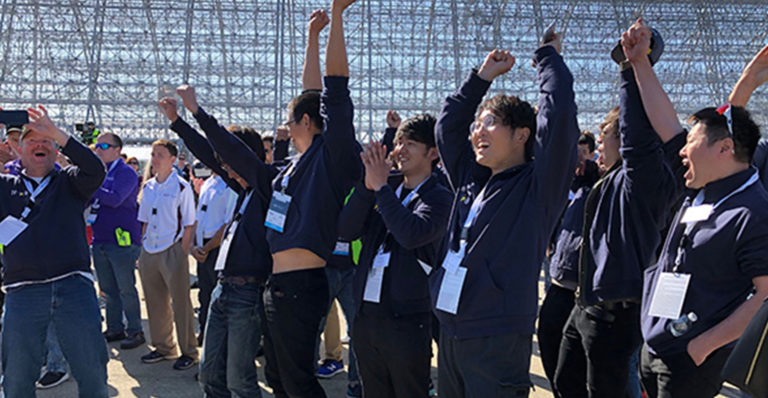Unmanned aerial vehicles, also known as drones, have captured the imagination of hobbyists for decades. Today, new generations of pilots and enthusiasts are reaping the advances in technology that have made it possible for nearly anyone to own a drone.
To keep up with interest and drone demand, the Aircraft Owners and Pilots Association (AOPA), a GoFly Prize partner, is creating new ways to educate and prepare pilots for flight, including the development of a curriculum for high school students interested in pursuing careers in aviation.
In the following Q&A, AOPA’s senior director of UAS programs Kathleen “Kat” Swain discusses the role drones will play in the future of personal flight, and how the definition of the word “pilot” is changing.
The following is an edited transcript of the discussion.
GoFly: Compared to 15 years ago, has the definition of “pilot” changed?
Swain: Yes, by leaps and bounds. I get excited when I hear drone operators, who have no private pilot certificates, refer to themselves as pilots. That puts a smile on my face because that’s exactly what they are. They’re flying a mission, they’re doing a job, they’re finding their passion in the skies, just like professional pilots do when flying manned or unmanned aircrafts.
I’m excited that the technology has expanded and that the regulatory community has allowed that innovation to flourish and not get stifled.
GoFly: AOPA provides a high school curriculum for aspiring pilots. Why is that important?
Swain: Even before high school, I knew I wanted to be a pilot, but trying to find the resources I needed was a bit of a struggle. Thankfully, I was a very headstrong young lady and I didn’t let anybody tell me ‘no.’ Even when people did tell me ‘no,’ I just found a way around it, working really hard to get to where I am today. But a lot of people don’t have the financial resources or the confidence to do it on their own. That’s why AOPA is stepping up to say ‘We see what’s lacking in this space. We know aviation and how to teach it.’
With our high school curriculum, students can get their foot in the door early, so that they don’t have to wait until they get to college or even after college to pursue their passion for flight. I’m seeing a lot of young kids come forward and say, ‘I want this career and I’m passionate about it. I see the different ways that being a pilot can improve the world, and I want to be a part of that.’
GoFly: What is your hope for the future of piloting?
Swain: Our main mission at AOPA is to give you the freedom to fly. I don’t see commercial flight and remote flight as mutually exclusive. We want the freedom to fly to exist in both worlds. There’s plenty of airspace for all of us to fly, enjoy our flight and fulfill our mission. I’m excited to see what the future holds in both arenas.
GoFly: What’s the best part about being a flight instructor?
Swain: As a flight instructor, I have always found joy when I take somebody up in the airplane for the very first time and give them their first flight. It gets very quiet sometimes and I’ll look over at them and they have a big smile plastered on their face. That to me is the ultimate joy— I’ve passed along something that I love very deeply and shared it with them. That’s one of the greatest things that I could ever give back to the aviation community.
GoFly: How will drones play a role in the future of personal flight?
Swain: There’s exciting potential. It’s another approach to passenger transport. You can see the amount of work, effort, time and money that’s being placed into companies that are revolutionizing transportation. Especially here in the United States, getting from point A to point B to point C takes a long time, whether it’s on the highway or via traditional air travel. If we can make something more efficient, safe and cost effective, I’m all for it.








